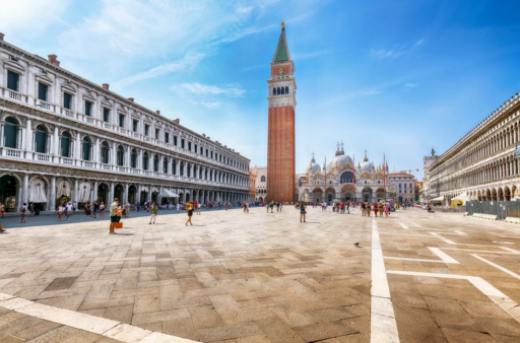For centuries, the art of glassmaking has been an integral part of Venetian culture, with one small island in particular playing a crucial role in its evolution. Murano, located just off the coast of Venice, has been synonymous with exquisite glass craftsmanship since the 13th century. The intricate techniques and exquisite designs of Murano glass have not only shaped the artistic landscape of Venice, but have also left a lasting impact on the history of Italian art and culture.

The Evolution of Murano Glass Techniques
Murano glassmaking has a long and rich history dating back to the 7th century. Over the centuries, the techniques used to create these exquisite glass pieces have evolved and developed, making Murano glass one of the most sought-after and prestigious forms of glass in the world.
One of the earliest techniques used in Murano glassmaking was the millefiori technique, where glass rods are fused together to create intricate patterns and designs. This technique dates back to the Middle Ages and is still used today to create beautiful and intricate pieces of Murano glass.
Another important development in Murano glass techniques was the invention of cristallo glass in the 15th century. This type of glass is known for its clarity and brilliance, and was a significant advancement in glassmaking at the time.
In the 17th century, glassmakers in Murano began experimenting with new techniques such as filigree and lampworking, which allowed for even more intricate and delicate designs to be created in glass.
Throughout the centuries, Murano glassmakers continued to innovate and refine their techniques, creating a wide variety of styles and designs that have become synonymous with Murano glass.
Today, Murano glassmakers continue to push the boundaries of their craft, experimenting with new techniques and materials to create contemporary and innovative pieces that continue to captivate and inspire art lovers around the world.
The Influence of Murano Glass on Venetian Art and Culture
The exquisite craftsmanship and intricate designs of Murano glass have become synonymous with the city of Venice, attracting artists and artisans from all over the world.
The Venetian Republic's monopoly on glassmaking in the 13th century allowed for the development of unique techniques and styles that set Murano glass apart from other glassmaking traditions. The use of gold and silver leaf, intricate filigree work, and vibrant colors became trademarks of Murano glass, influencing not only glassmaking but also other forms of art in Venice.
The presence of Murano glass in Venetian palaces, churches, and public spaces served as a symbol of wealth and prestige, showcasing the city's artistic prowess to visitors and dignitaries. Venetian painters, such as Titian and Tintoretto, often incorporated Murano glass vessels and objects into their paintings, further solidifying the link between Murano glass and Venetian art.
The innovation and creativity of Murano glassmakers inspired artists and designers beyond Venice, leading to the spread of Venetian glassmaking techniques and styles across Europe and beyond. Murano glass became a coveted luxury item that was exported to elite clientele around the world, shaping the global perception of Venetian art and craftsmanship.
Despite challenges and setbacks over the centuries, including competition from other glassmaking centers and economic downturns, Murano glass has remained a symbol of Venetian artistry and cultural heritage. The revival of Murano glassmaking in the 20th century has continued to uphold the tradition of excellence and innovation that has defined Venetian art and culture for centuries.
Famous Murano Glassmakers Throughout History
Throughout history, Murano has been home to many renowned glassmakers who have contributed significantly to the art of glassmaking. One of the most famous glassmakers in Murano's history is Angelo Barovier, who is credited with developing the cristallo glass technique in the 15th century. This technique allowed for the production of clear, colorless glass that was highly prized by European royalty and aristocracy.
Another prominent figure in Murano's history is Francesco Toso, who founded the Toso glassmaking dynasty in the 19th century. The Toso family is known for their intricate murrine glasswork, which involves fusing together colored glass rods to create decorative patterns and designs.
In the 20th century, Archimede Seguso revolutionized Murano glassmaking with his innovative approach to design and technique. His creations pushed the boundaries of traditional glassmaking and earned him international acclaim.
Today, contemporary artists like Lino Tagliapietra and Pino Signoretto continue to carry on the legacy of Murano glassmaking, blending traditional techniques with modern aesthetics to create stunning works of art.
These famous Murano glassmakers have played a pivotal role in shaping the history of glassmaking on the island and have cemented Murano's reputation as a center of excellence in the art of glass.
The Decline and Revival of Murano Glassmaking
However, with the decline of the Venetian Republic and the rise of industrialization, traditional Murano glassmaking techniques began to fall out of favor. Cheaper, mass-produced glass from other regions started to dominate the market, leading to a decline in demand for Murano glass.
By the late 19th and early 20th centuries, many traditional Murano glassmaking workshops had closed down, and the once-thriving industry was on the verge of extinction. However, thanks to a renewed interest in traditional craftsmanship and artisanal goods, Murano glassmaking experienced a revival in the mid-20th century.
Today, Murano glassmakers are once again celebrated for their skill and artistry, and Murano glass products are coveted around the world. Modern glassmakers have embraced new technologies and techniques while still honoring the centuries-old traditions of their craft. The revival of Murano glassmaking has not only preserved a valuable cultural heritage but also ensured the continued prosperity of the industry for future generations.
